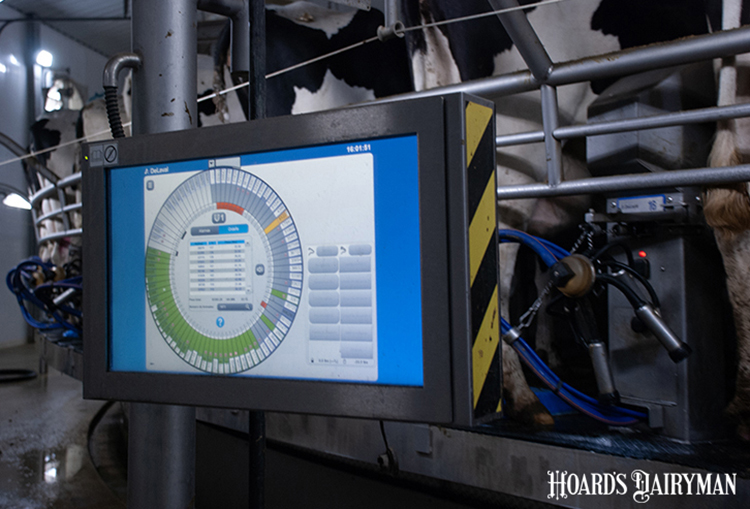
“A huge issue continues to be a data dump. Technology creates a huge spreadsheet of data, and the user is left with the task of interpreting the data,” said Jeffrey Bewley, the dairy analytics and innovation scientist with Holstein Association USA. “My best friends are dairy farmers. They don’t spend the whole day looking at a spreadsheet. They have other things to do,” he continued at the 62nd Annual National Mastitis Council meeting in Atlanta, Ga.
“We also must think about the software interface. I want to see a cloud-based interface and a smartphone application,” continued the scientist who grew up caring for cows and building spreadsheets to track on-farm dairy trends decades ago. “Technology also must address the needs of both visual and verbal learners. We all view the world differently. I am a visual learner. However, I’ve also learned that not everyone sees the world that way. Some people prefer to see tables,” Bewley continued.
“We need an intuitive user interface,” he said. “It should have a real-time data display as I don’t want to see important information two days later. Plus, those displays must show what’s most important and most actionable for the farm.
“Then there’s the area of customer-focused training and support,” chimed Bewley. “This is a huge area where technology providers sometimes fall short.
“We also have data that sits in silos. That limits what we can do with the technology. I think we are headed in the right direction in building interfaces for technologies that can talk to one another,” he explained, noting that we will not reach perfection in a world with many platforms.
“We also have to think about economics. We need to consider the initial investment cost, and the ongoing costs associated with technologies,” he said.
“We have to remember that when we talk about disease detection, we are not eliminating the cost of that disease, we are just reducing it,” shared Bewley in discussing the cow-level component. “Ultimately, we have to compare how much money is spent on detection versus cost outlays on prevention. The farmer has to make the decision. Maybe it makes more sense to invest in prevention versus detection. We have to consider the cost of the intervention. It’s not free to intervene. We also have to consider the likelihood that the intervention is successful,” said Bewley, who leads the SmartHolstein Lab.
“And then, most importantly, do we actually use the information generated from the technology or do we ignore it?” he asked the international audience. “Remember, data has no value if we ignore it.”
Pick a launch point
“Let’s remember, ‘Perfection is the enemy of progress,’” Bewley shared in quoting Great Britain’s World War II era prime minister, Winston Churchill. “I think that tomorrow’s technological innovation is beyond what we can dream. That’s because we don’t know what’s going to be developed in other industries. We will be able to borrow those technologies and integrate them into the dairy industry,” continued the dairy data scientist.
“We should continue to dream big about what we can get out of technology. At the same time, we must keep the cow in mind during this entire journey. She’s the key to the whole farm.”
To comment, email your remarks to intel@hoards.com.








